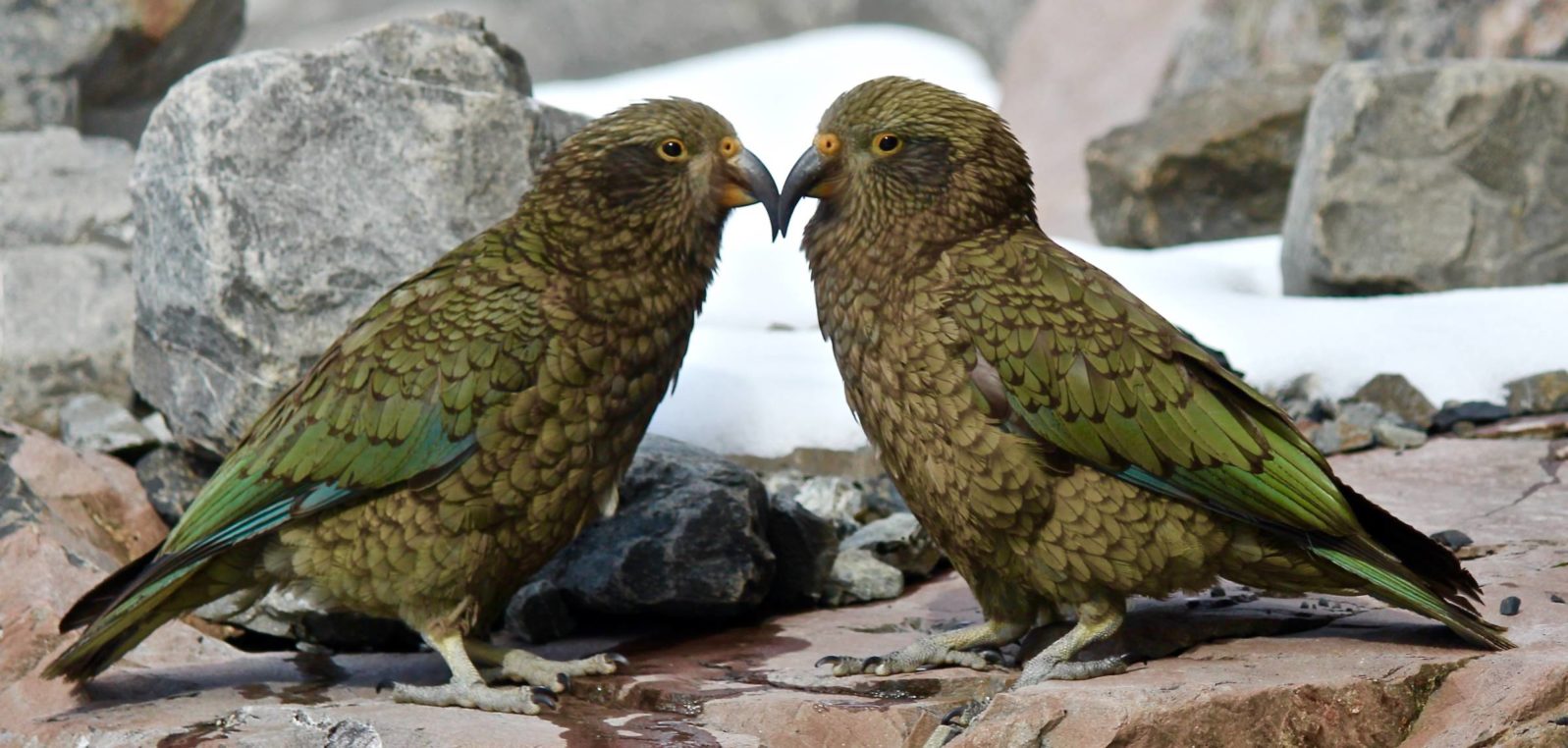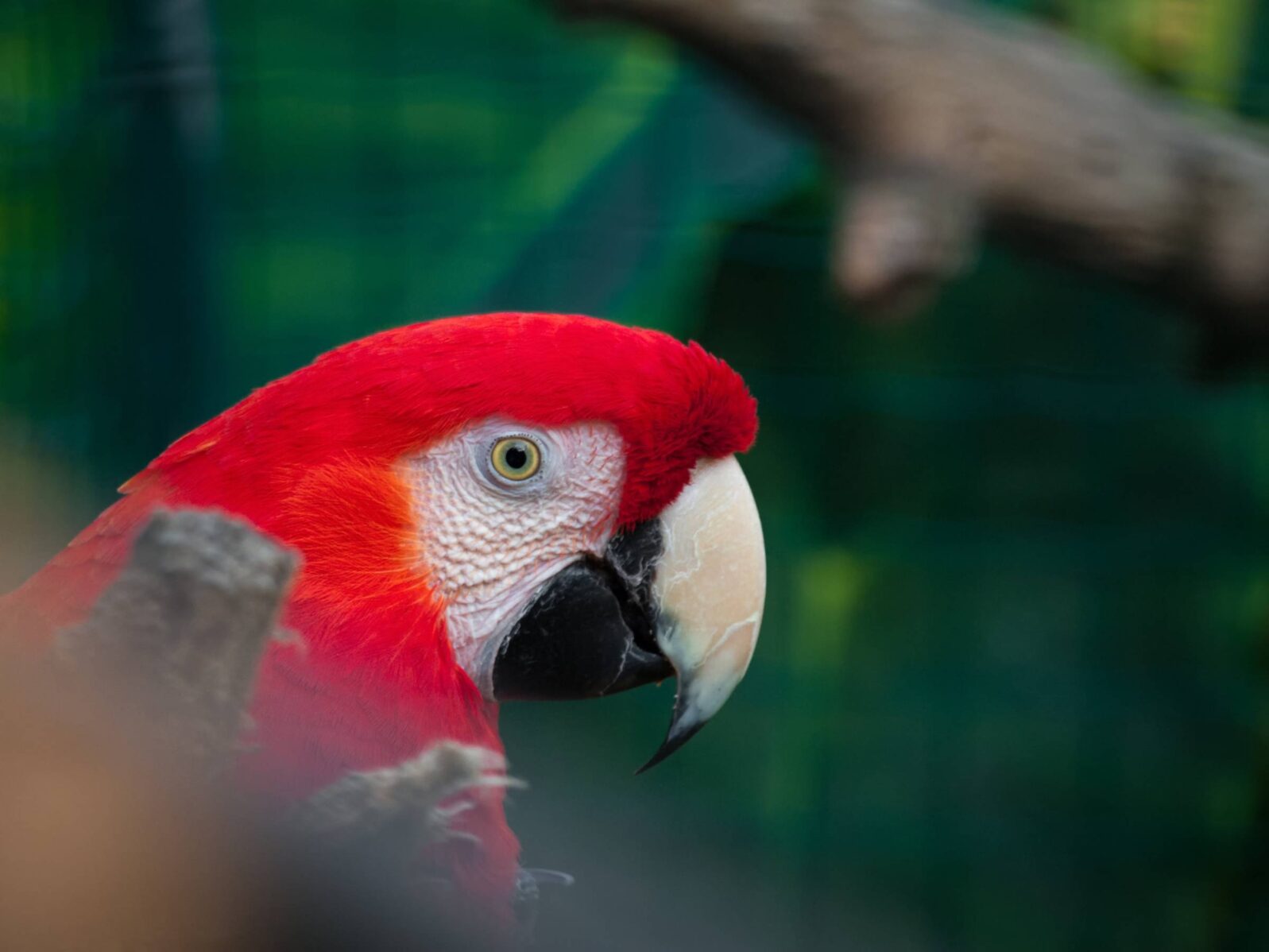Polly Want a … Statistician?
Ethology, the science of animal behavior, offers interesting data but the interpretations are too often witlessEthology — the science of animal behavior — is, to paraphrase philosopher Roger Scruton (1944–2020), a vast trove of answers with no memory of the questions. The data is interesting but the interpretations are too often witless. For example, scientists in a recent study have claimed to show that parrots may use statistical reasoning to obtain treats:
In a new study led by Bastos and colleague Alex Taylor, keas, one of New Zealand’s most intelligent parrot species, were able to act on their sense of probability to get a treat. In some tasks, they even outperformed primates.
The researchers laid out three different tasks to test whether or not the cute parrots were also statistical whizzes. The birds were first taught that if they picked out a black token, they’d get a treat. Pick out an orange token, no treat.
In test one, they saw two different jars, one mostly black, one evenly mixed, and then a researcher drew one token from each and kept it hidden in their fist. The parrots tapped on a separating glass to let the researchers know which hand they predicted had a black token. The smart little birdies, at a rate around 17 out of 20 tries, tapped on the side with the high-percentage black jar.
This even worked if the number of the black tokens was the same in both jars, but one had a higher ratio of orange to black.
In experiment two, a boundary was added between the top and bottom halves of both jars, adding a physical component to the simple probability question. The birds were able to guess which fist was more likely to hold a black token: looking only at the top half of the jar — ignoring the rest underneath the divider.
A third experiment added a twist: two experimenters chose a token each, where one was fishing around for a black token in a mostly orange jar, and the other chose randomly. When the kea picked a person to take the token from, they successfully remembered the researcher who clearly had a bias towards black tokens.
That final round tests something called “domain-general intelligence,” or an ability to put together multiple cues to predict the future, says Bastos. It’s the same kind of thinking people use playing poker. “You can sort of guess what the next player is going to do, not only on the probability that they have a certain card but also, telling if they are lying or bluffing,” she says.
Sara Kiley Watson, “Kea parrots use statistics to get what they want” at Popular Science
The study is open access.
Birds, like all animals, can be clever and in many ways they can perceive things that humans can’t. A horse can sense extraordinarily subtle movements in its rider and respond accordingly. Dogs sometimes sense human moods and intentions that are not perceived by other humans. But does this sensitivity — and specifically the ability of parrots to select treats— mean that animals can do statistics?
Watson thinks it might: “But it turns out birds also have an inkling of this mathematical understanding.”
The researchers are (appropriately) more cautious:
Irene Pepperberg, a Harvard researcher and parrot expert, isn’t sure that all of this adds up to real statistical understanding. In the first two experiments, she says that the birds might be able to understand relative amounts. However, they’re not necessarily clued in to the fact that even if they pick the mostly black jar, they could still lose. “To really understand probability and statistical reasoning, a subject must understand that although X is more probable, Y can still happen,” she told PopSci in an email. “Even though ‘more is more likely,’ it doesn’t guarantee success.”
Sara Kiley Watson, “Kea parrots use statistics to get what they want” at Popular Science
Dr. Pepperberg could have been more forthright: Parrots can’t do statistics. No animal (except man) can do statistics, because statistical reasoning is abstract and only human beings are capable of abstract thought. Parrots think concretely — they think of particular things and relations between particular things, but they cannot think without particular things — they can’t think abstractly.
My little dog Pippa loves treats, proffered as a reward for good behavior. She spends much of her time angling for treats — showing me how good she is. She jumps in excitement when I reward her. I usually give her two treats (“you’ve been twice as good as usual today!”), which delights her. Occasionally, I give her one treat (she’s a bit chubby) and her disappointment is obvious. She eats it, then looks at me as if to ask “where’s the other one?”
Pippa’s charming behavior does not demonstrate that she does mathematics. She does not think of “one” or “two” as numbers and she most certainly does not think of nutrition (“what would the second treat do to my doggie A1C level?”) She is incapable of abstraction — she only thinks in concrete terms. But she likes treats, the more the better, and she will go through a range of complex behaviors to get more treats. But she doesn’t think about treats in the abstract — she doesn’t count calories or do statistics.

People can think either concretely or abstractly. For example, I really like frozen yogurt bars (concrete). So I don’t buy them (abstract) — I know I won’t be able to stop eating them and I’m trying to be healthy. Animals don’t behave that way. They just like what they like, and are incapable of thinking in the abstract about consequences.
If you think about it, how could an animal do statistics? They have no language, so all of their thoughts are perceptions and emotions. What concrete perception would Bayesian analysis or sample variance be? What color would the concept of normal distribution be? Is a p-value heavy? Mathematical statistics presupposes abstract thought, which presupposes genuine language by which to represent the abstraction, which animals manifestly lack.
This concreteness of animal thought, and its contrast to human thought, has been known since Aristotle. (384–322 B.C.E.). He called concrete animal knowledge “sensus communus,” by which he meant that animals can compare and contrast concrete particular things—more or less food, more or less danger, etc. But animals can’t reason. Parrots can’t do statistics.
Only human beings can reason abstractly because only human beings have rational souls. Rational souls have an immaterial aspect—a spiritual aspect, because we are created in the Image of our Creator, who is a Spirit.
That’s a scientific inference.
Further reading on intelligence in birds:
Crows can be as smart as apes. But they have quite different brains. The intelligence doesn’t seem to reside in the details of the mechanism.
and
Can genes predict which birds can learn to talk? A recent study disappointed researchers, who really hoped to learn why humans use language.
